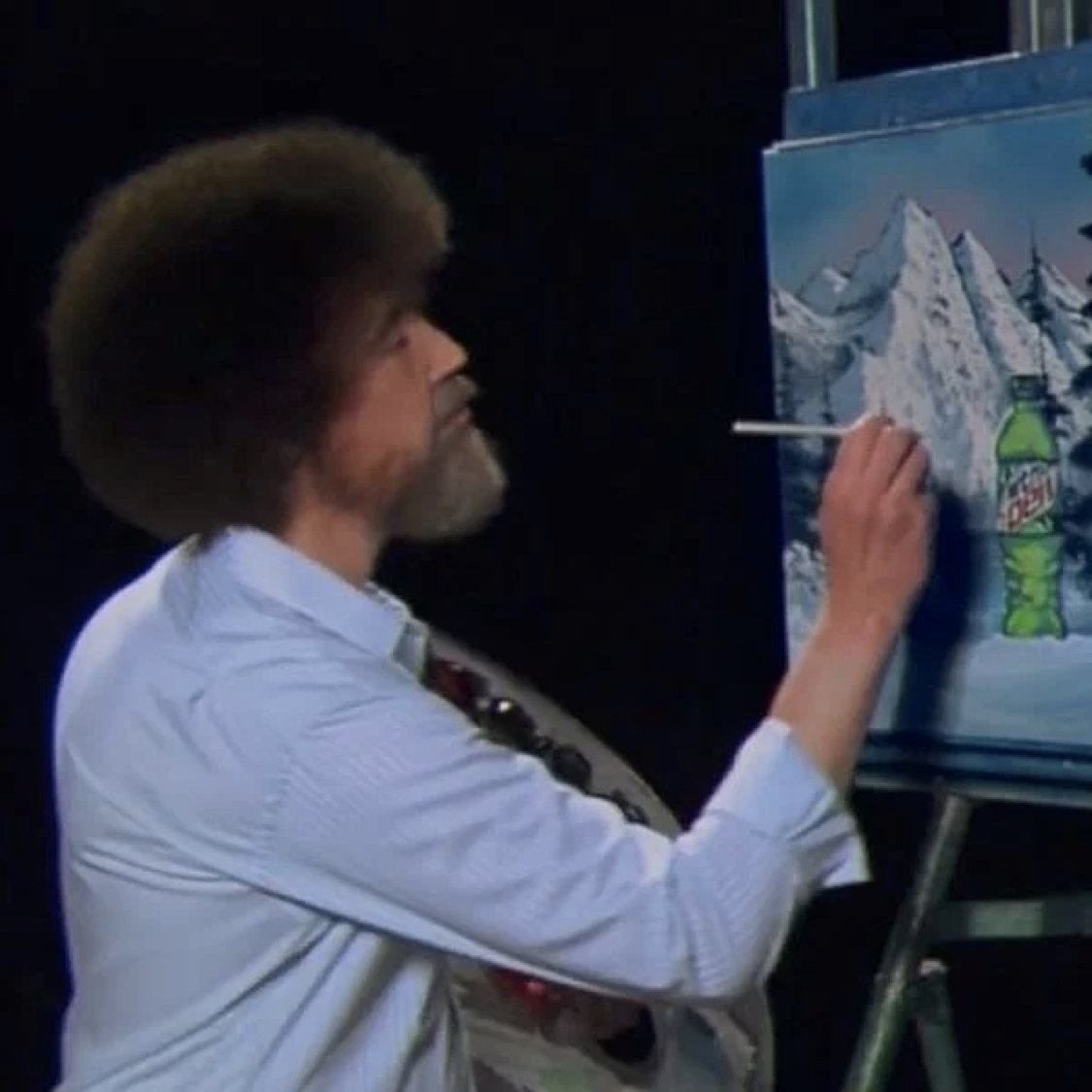In an age of advancing technology, people are creating deepfake videos to tell virtually any story. No doubt you’ve seen some of these videos where the CGI is used to manipulate visuals to the point of being nearly unclockable.
But where do we begin to understand the dangers of this, regulating what can be perceived as truth by those less experienced in the process? When does that regulation overstep into censorship? And who would be the regulating body?
After all, do we regulate art? Do we regulate advertising? Just how far does free speech go?
Recently, an ad by Mountain Dew incorporated the likeness of the late Bob Ross, a modern maestro with paint. The ad utilizes impressive deepfake technology to recreate his process by painting a bottle of The Dew, speaking to the audiences most impacted by Ross’ influence.
No doubt they chose Ross as the pseudo-spokesperson for this ad due to the reverence many millennials feel for his work, the comfort he brought and the nostalgia-driven culture that pervades anyone from the ages of 25 to 40 (for reasons too lengthy to get into here). Ross’ look and mannerisms were recreated using CGI overlapping an actor whose physical features and movement resembled Ross while wearing prosthetics and a wig. Designers used face-mapping and reality augmentation to structure his mouth features and speech patterns, then adjusted the body visually to match.
The ad was greenlit by Bob Ross’ estate, but we are posed with an ethical question: Ross himself never took part in advertising, sponsorship, etc. and was a strong proponent of free and accessible educational programming, especially so with PBS. Would this ad align with his core belief system? Do we get to use someone’s visage, persona and voice to sell our products after they die?
For the Star Wars films, they used deepfake CGI, prosthetics and Hollywood magic to bring Carrie Fisher into a movie she hadn’t been part of filming for. The process was intricate, and begs the question: Do we change the story or change the process?
It seems to me we will begin to see more statements of usability and creative licensing put out by people to continue owning their likeness after death, as it is becoming more and more possible to, in all essences, resurrect them to sell our goods and services.
Public relations, at least through most of the professional organizations, takes a stance of ethics, transparency and accountability with communication, marketing and advertising, but it seems this deepfake technology falls in a grey area discussion zone. At what point do we begin to discuss beyond what the dollar can buy and how these campaigns can affect the perception of someone post-mortem?
Mountain Dew’s campaign includes a full-length episode of “Paint with Bob Ross” coming March 6, and appears to promise a giveaway and charity auction.
Additionally, deepfake tech has been used to create duplicate versions of political ads with antithetical messages. NPR details out how these can be especially misleading. This particular use shows a high risk situation in which a persona could be so perceptively convincing that it would confuse even the most scrutinous media consumer. This instance begs the question, where do we step in, and how do we put blockers in place to keep from having a reality manufactured in a circuit board?
Do we allow this when it is just dead artists, or do we allow it for anyone? Where do we Paint the Line?



